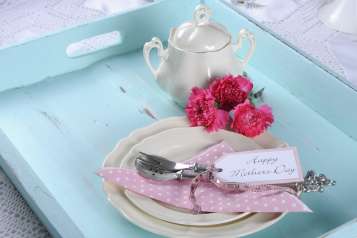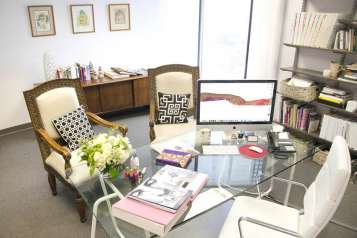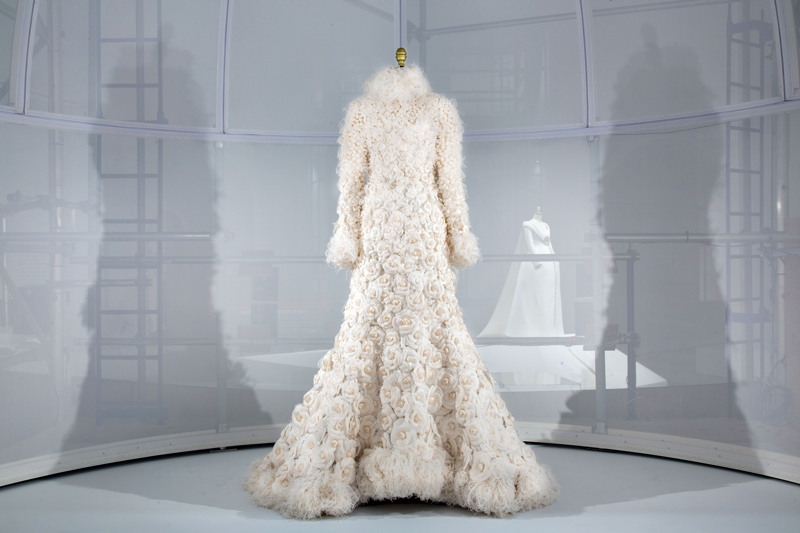
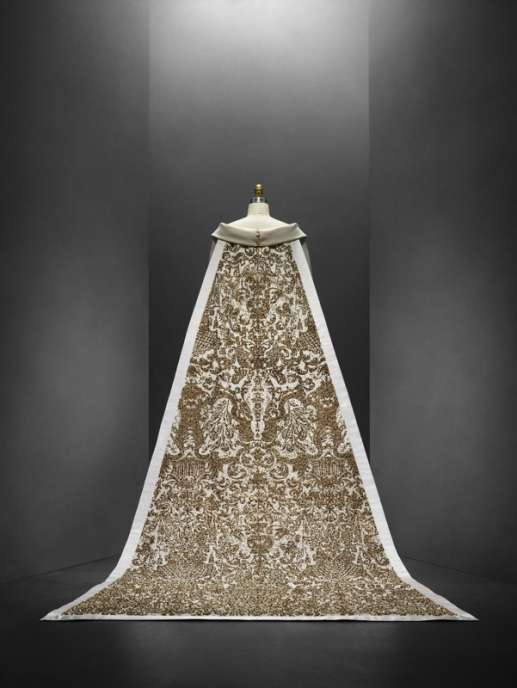
The Costume Institute’s opening night gala is all about who was wearing what, but you did want to know what the new exhibit—the reason for all the hoopla–is about, don’t you?

The show, Manus x Machina: Fashion in an Age of Technology was masterminded by curatorial whiz Andrew Bolton, and looks at how both handmade and machine-driven processes have pushed fashion forward. “This exhibition proposes a new view in which the hand and the machine, often presented as oppositional, are mutual and equal protagonists,” said Thomas Campbell, CEO of the Met, at a a briefing before the gala. Campbell was joined by Anna Wintour, Jonathan Ive, chief design officer at Apple, a major sponsor of the show, and Bolton. Laurene Powell Jobs, the philanthropist and widow of Steve Jobs, was also in attendance.
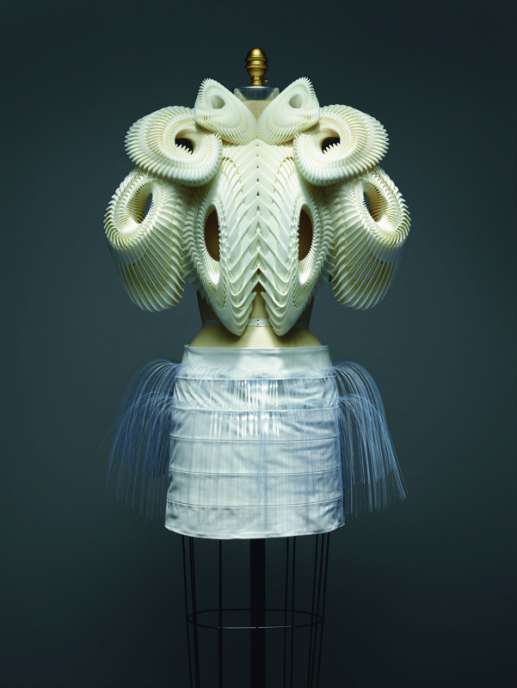
For purists who consider that couture can only involve the handmade and are reluctant to embrace hi-tech processes in the posh atelier, Ives pointed out that “all craft processes were new at some point” (including the needle!).
“Traditionally, the distinction between the haute couture and prêt-à-porter was based on the handmade and the machine-made, but recently this distinction has become increasingly blurred as both disciplines have embraced the practices and techniques of the other,” said Bolton.
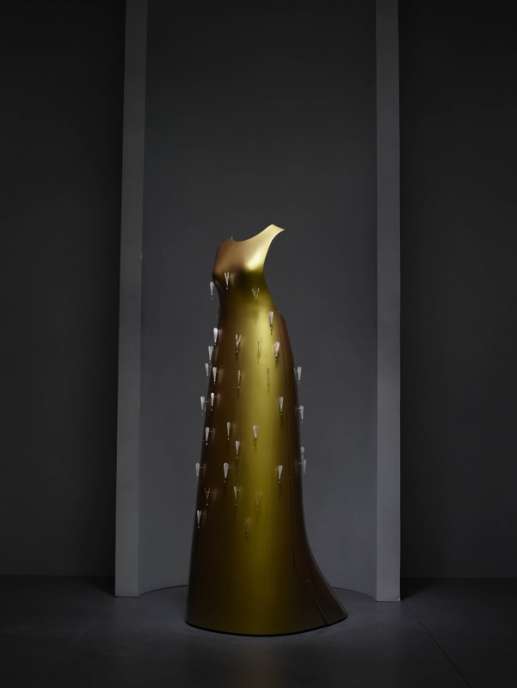
Kaikoku Floating Dress Hussein Chalayan, Autumn 2011

Manus x Machina features more than 170 examples of haute couture and avant-garde ready-to-wear, dating from the early 1900s to the present. The exhibition covers the founding of haute couture in the 19th century, when the sewing machine was invented, and the emergence of a distinction between the hand (manus) and the machine (machina) at the onset of industrialization and mass production. It explores this ongoing dichotomy, in which hand and machine are presented as discordant tools in the creative process, and questions this relationship and the significance of the long-held distinction between haute couture and ready-to-wear.
The Robert Lehman Wing galleries, on the Museum’s first floor and ground level, have been transformed into a building-within-a-building using white scrims. The space houses a series of case studies in which haute couture and ready-to-wear ensembles are decoded to reveal their hand/machine DNA.
A 2014 haute couture wedding dress by Karl Lagerfeld for Chanel with a 20-foot train occupies a central cocoon, with details of its embroidery projected onto the domed ceiling. A scuba knit ensemble, one of the inspirations for the exhibition, serves as a prime example of the confluence between the handmade and the machine-made–the pattern on the train was hand-painted with gold metallic pigment, machine-printed with rhinestones, and hand-embroidered with pearls and gemstones.
The exhibition is structured around the traditional métiers of the haute couture. The first floor houses a series of alcoves, examining the petites mains workshops of embroidery, featherwork, and artificial flowers. The ground floor space is arranged as an enfilade, examining pleating, lacework, and leatherwork. A room dedicated to toiles and the ateliers of tailoring (tailleur) and dressmaking (flou)—the traditional division of a maison de couture—anchors the ground-floor gallery. On both floors, traditional hand techniques are discussed alongside innovative technologies such as 3-D printing, computer modeling, bonding and laminating, laser cutting, and ultrasonic welding.
Designers in the exhibition span decades: Cristobal Balenciaga, Boué Soeurs, Sarah Burton (Alexander McQueen), Pierre Cardin, Hussein Chalayan, Gabrielle “Coco” Chanel, Maria Grazia Chiuri and Pierpaolo Piccioli (Valentino), André Courrèges, Giles Deacon, Christian Dior, Alber Elbaz (Lanvin), Mariano Fortuny, John Galliano (Christian Dior, Maison Margiela), Jean Paul Gaultier, Nicolas Ghesquière (Balenciaga, Louis Vuitton), Hubert de Givenchy, Madame Grès, Halston, Lazaro Hernandez and Jack McCollough (Proenza Schouler), Iris van Herpen, Marc Jacobs (Louis Vuitton), Charles James, Christopher Kane, Mary Katrantzou, Rei Kawakubo (Comme des Garçons), Junko Koshino, Karl Lagerfeld (Chanel), Helmut Lang, Louise Boulanger, Mary McFadden, Alexander McQueen (Givenchy), Issey Miyake, Noir Kei Ninomiya (Comme des Garçons), Norman Norell, Jean Patou, Miuccia Prada, Paul Poiret, Gareth Pugh, Paco Rabanne, Noa Raviv, Yves Saint Laurent (Christian Dior, Yves Saint Laurent), Raf Simons (Christian Dior), Maiko Takeda, Riccardo Tisci (Givenchy), threeASFOUR, Madeleine Vionnet, Catherine Wales, Junya Watanabe (Comme des Garçons), Yohji Yamamoto, and others.
Manus X Machina opens to the public on May 5th and runs through August 14th, 2016. For more information about the show, go the the Met Museum’s website: www.metmuseum.org/ManusxMachina







